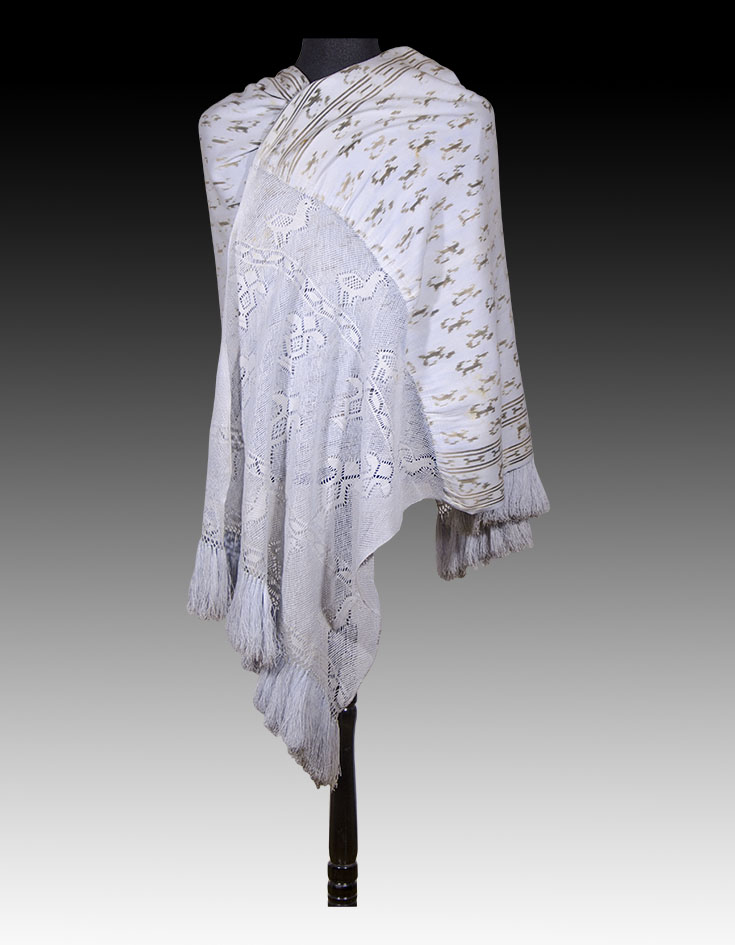BACK TO TOP
TEXTILES
Rebozo shawl or
North Coast, Peru. First quarter of the 20th century.
Fine and elegant garment woven in a loom from waist to warp face, with one of the most relevant products in the economic development of Peru in the last two centuries: fine cotton. Here using cotton produced by a former industrial spinning mill. Measurements. Cloth length: 135 cm / 53.15 in. Width: 72 cm. Doilies: 50 cm / 19.68 in. Fringe: 16 cm / 6.3 in.
The garment consists of two parts of different manufacture: the cloth itself, with a very delicate ikat technique, tying a large surface area of the warp threads to immerse them in the dyeing bath and embody the tiny figurines -dogs on the fabric, in this case-, and lace, (continuation of the warp threads that were reserved without staining or weaving) woven with a complicated technique of thousands of knots, adjusted one by one -"by fingernail", they define it- by the artisan, until culminate in a shower of fine cotton threads. The ornamental figures of these doilies show, as a traditional motif, perched pigeons and others in flight. Despite the age of this shawl, the free threads show a more rigid structure and a bluish tone, obtained by the use of a wash-resistant bleach, similar to the gumming of the fringes of 19th century English ponchos, whose composition we do not know at present.
The use of cotton is documented in textiles dated 2000 years BC. and its quality improved by the Nazca and Paracas cultures (between 750 and 350 BC), it is towards the 1830s when its cultivation intensifies with the intention of exporting the surplus production after supplying the domestic market.
“At the beginning of the republic, the main crop on the large estates was sugar cane. Cotton would gradually gain importance (…) The orientation of the national productive apparatus towards the export sector was consolidated and became the main source of income for the treasury. In this context, a Puerto Rican scientist, Fermín Tangüis, develops in the Pisco Valley a variety of long-fiber cotton, resistant, soft and suitable for dyeing, which is one of the main agro-export products on the central coast of Peru. Years later, for the Piura valley, the farmer Emilio Hilbk Seminario would import from Arizona the “Pima” variety, with extra-long fiber, extraordinary quality and great softness”. (1)
Notes: 1. Muñoz Marticorena, William: Peru. Textile Tradition and International Competitiveness. Editorial Fund of the Catholic University. Sapientiae headquarters. Lima, 2006, p. 16.
Are you interested in selling some works?
Send us an email briefly indicating
which works you intend to put on sale, and we will respond. click here
Subscribe to our newsletter to be updated.
Check our Newsletters
